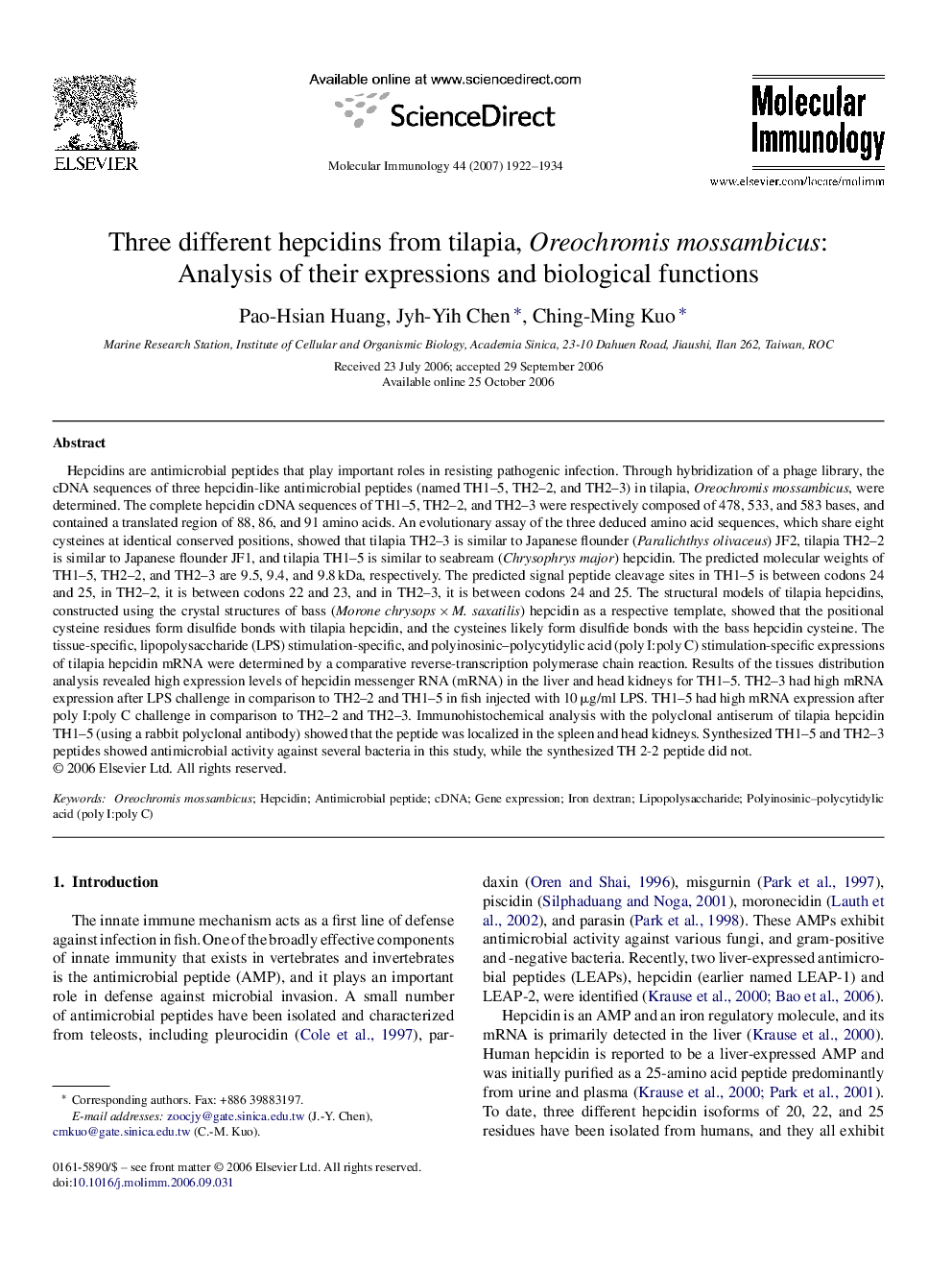| کد مقاله | کد نشریه | سال انتشار | مقاله انگلیسی | نسخه تمام متن |
|---|---|---|---|---|
| 2833388 | 1163868 | 2007 | 13 صفحه PDF | دانلود رایگان |

Hepcidins are antimicrobial peptides that play important roles in resisting pathogenic infection. Through hybridization of a phage library, the cDNA sequences of three hepcidin-like antimicrobial peptides (named TH1–5, TH2–2, and TH2–3) in tilapia, Oreochromis mossambicus, were determined. The complete hepcidin cDNA sequences of TH1–5, TH2–2, and TH2–3 were respectively composed of 478, 533, and 583 bases, and contained a translated region of 88, 86, and 91 amino acids. An evolutionary assay of the three deduced amino acid sequences, which share eight cysteines at identical conserved positions, showed that tilapia TH2–3 is similar to Japanese flounder (Paralichthys olivaceus) JF2, tilapia TH2–2 is similar to Japanese flounder JF1, and tilapia TH1–5 is similar to seabream (Chrysophrys major) hepcidin. The predicted molecular weights of TH1–5, TH2–2, and TH2–3 are 9.5, 9.4, and 9.8 kDa, respectively. The predicted signal peptide cleavage sites in TH1–5 is between codons 24 and 25, in TH2–2, it is between codons 22 and 23, and in TH2–3, it is between codons 24 and 25. The structural models of tilapia hepcidins, constructed using the crystal structures of bass (Morone chrysops × M. saxatilis) hepcidin as a respective template, showed that the positional cysteine residues form disulfide bonds with tilapia hepcidin, and the cysteines likely form disulfide bonds with the bass hepcidin cysteine. The tissue-specific, lipopolysaccharide (LPS) stimulation-specific, and polyinosinic–polycytidylic acid (poly I:poly C) stimulation-specific expressions of tilapia hepcidin mRNA were determined by a comparative reverse-transcription polymerase chain reaction. Results of the tissues distribution analysis revealed high expression levels of hepcidin messenger RNA (mRNA) in the liver and head kidneys for TH1–5. TH2–3 had high mRNA expression after LPS challenge in comparison to TH2–2 and TH1–5 in fish injected with 10 μg/ml LPS. TH1–5 had high mRNA expression after poly I:poly C challenge in comparison to TH2–2 and TH2–3. Immunohistochemical analysis with the polyclonal antiserum of tilapia hepcidin TH1–5 (using a rabbit polyclonal antibody) showed that the peptide was localized in the spleen and head kidneys. Synthesized TH1–5 and TH2–3 peptides showed antimicrobial activity against several bacteria in this study, while the synthesized TH 2-2 peptide did not.
Journal: Molecular Immunology - Volume 44, Issue 8, March 2007, Pages 1922–1934